World Arts and Culture at the Museum of Anthropology in Vancouver, British Columbia
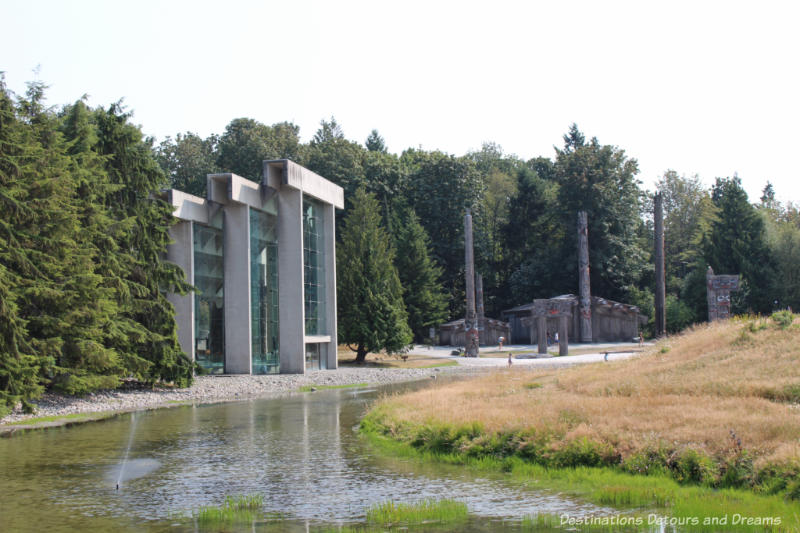
Located on the grounds of the University of British Columbia in Vancouver, Canada, the renowned Museum of Anthropology showcases cultures from around the world with a special emphasis on Pacific Northwest First Nations
The Museum of Anthropology (MOA) at the beautiful University of British Columbia campus in Vancouver, British Columbia is renowned for its exhibits of worlds arts and culture with a special emphasis on Canada’s First Nations people and other cultural communities of British Columbia, Canada. It is a world-class museum and a Vancouver attraction well worth visiting.
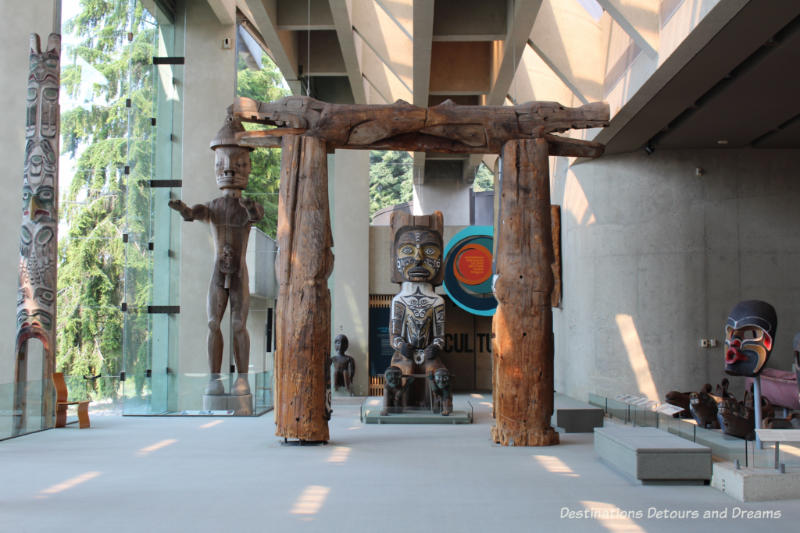
As you enter the Great Hall, you are greeted with a collection of First Nations sculptures.
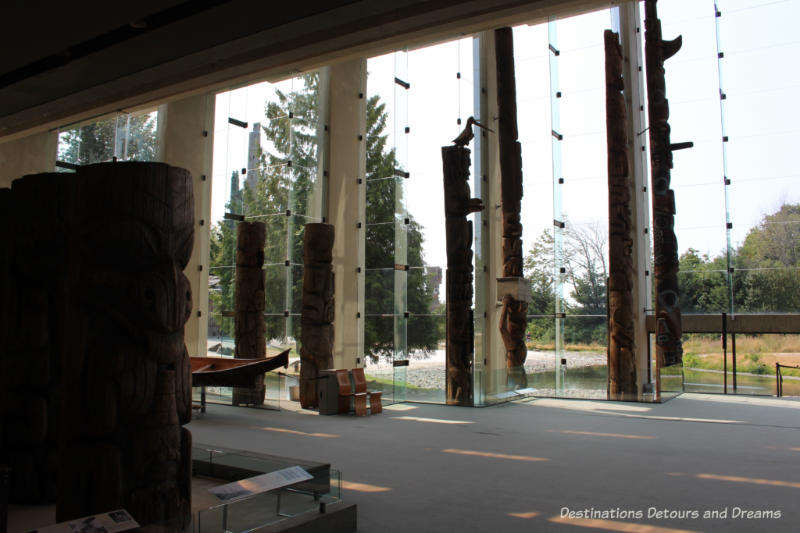
Displayed against a tall glass wall with views of the forests and mountains along the Salish Sea, the sculptures create an impressive welcome. The museum, which opened in 1976, was designed by Canadian architect Arthur Erickson to sit on a steep promontory. The design was inspired by the cedar post and beam construction found in traditional Northwest Coast First Nations villages.
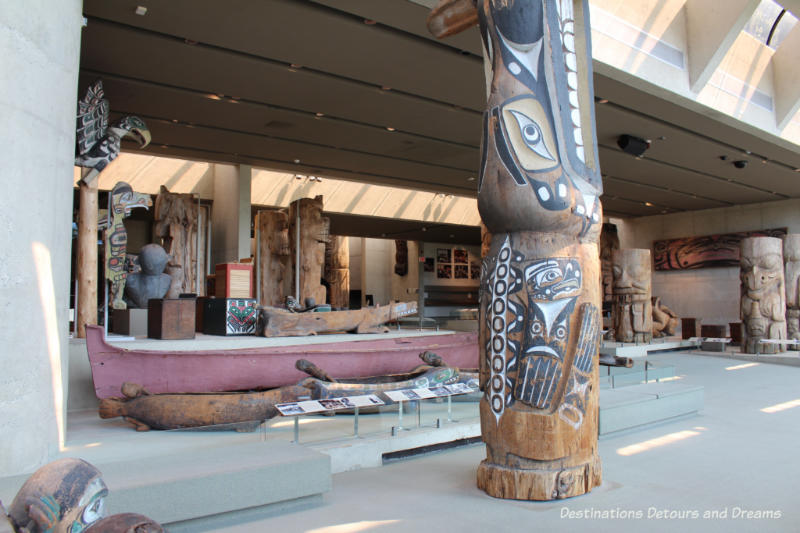
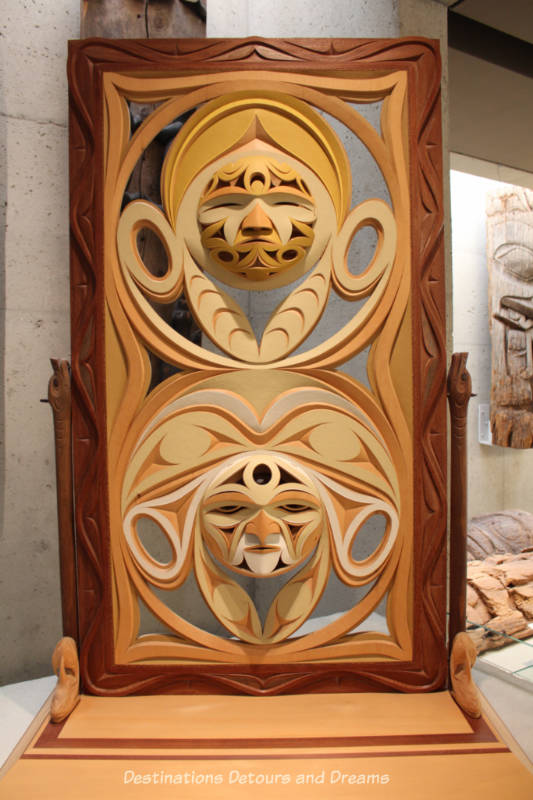
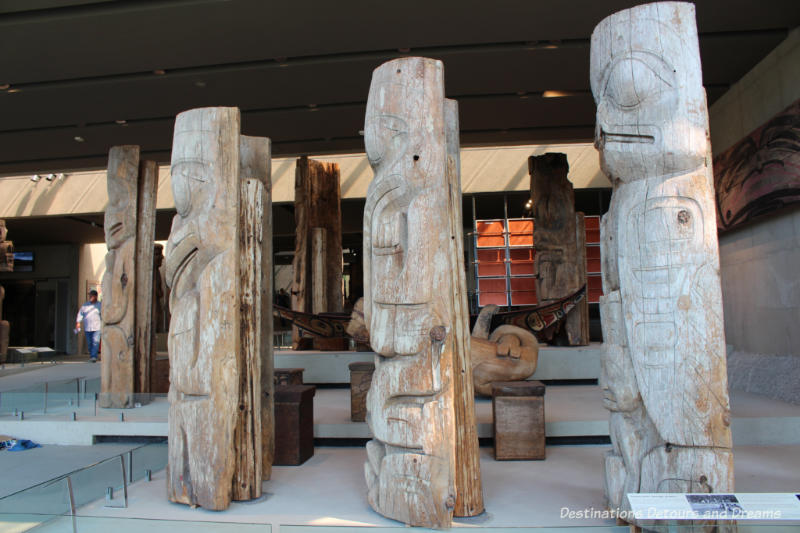
Information beside the above exhibit talked about how totem poles, both those preserved in museums and those allowed to remain on their original sites, have become central to debates about cultural heritage and the roles of museums and First Nations in their ownership, care, and display. In the 1950s several historical totem poles were purchased, removed from original village sites and relocated to museums in Victoria and Vancouver in order to protect the poles from vandalism and decay.
During the 18th and 19th centuries totem poles were raised as markers of important events. They were allowed to age and eventually fall to the earth. New poles would be raised as community life continued. However, with the impacts of Christianization, anti-potlatch laws, and changing economies, few poles were raised between 1900 and 1969. In 1969, the Haida community at Old Massett gathered to celebrate Robert Davidson’s Mother Bear pole, the first pole carved and raised there in the 20th century. (Note: A potlatch is a ceremony that is part of the cultural and spiritual traditions of various First Nations on the Northwest Coast of North America. It was held on the occasion of special events, such as marriages, births and funerals. It was often the ceremony in which totem poles were erected.)
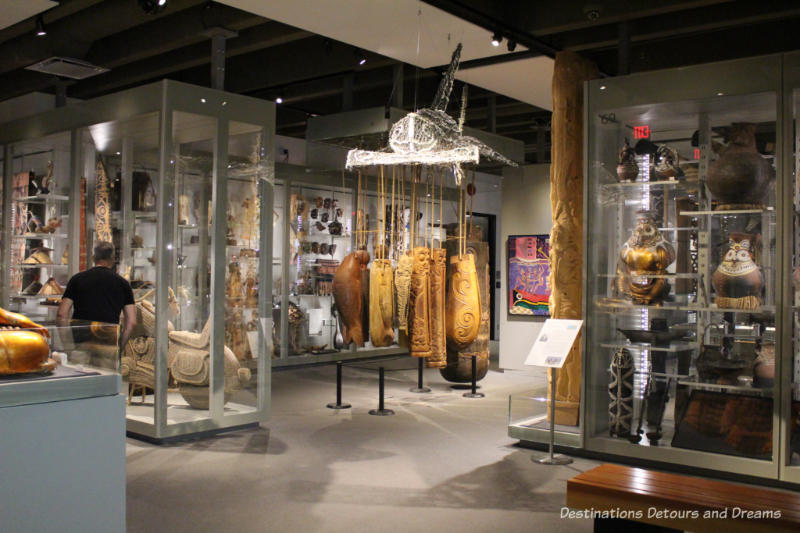
MOA collaborated with First Nations communities across British Columbia, as well as Pacific Islanders, Africans, Asians and Latin Americans, to display the Museum’s collections. Exhibits are not necessarily grouped by provenance, usage or type, but according to Indigenous criteria. Some are grouped by ceremonies in which they were used. In his welcome message on the museum’s web page, the Director says, “These galleries embody the idea that there is never just one way of knowing and seeing the world.”
That collaboration and respect for cultures has created a fascinating experience for museum visitors.
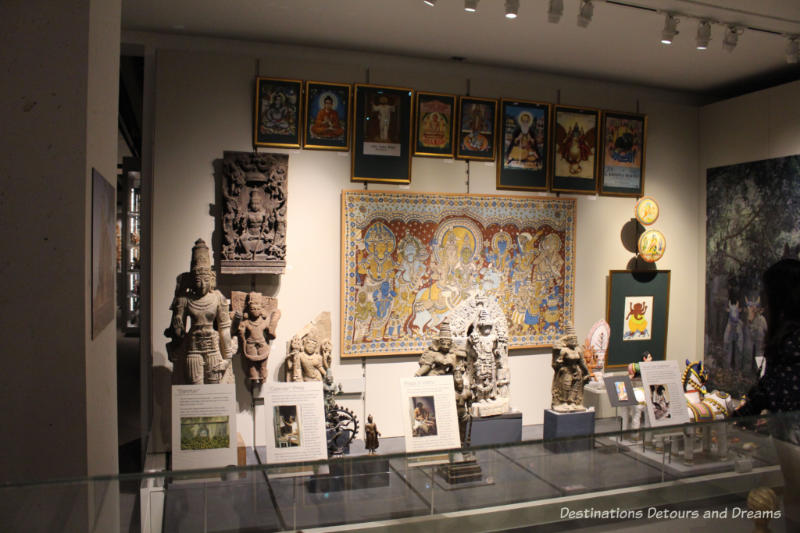
The galleries contain items from around the world. The message on the front of the museum map I used to guide my way through the museum said, “Welcome to the MOA where thousands of objects tell thousands of stories.” Items are displayed in exhibit cases with fibre optic lighting and in a system of drawers. The information on the museum map also said, “opening a single drawer can reveal treasures from the past.”
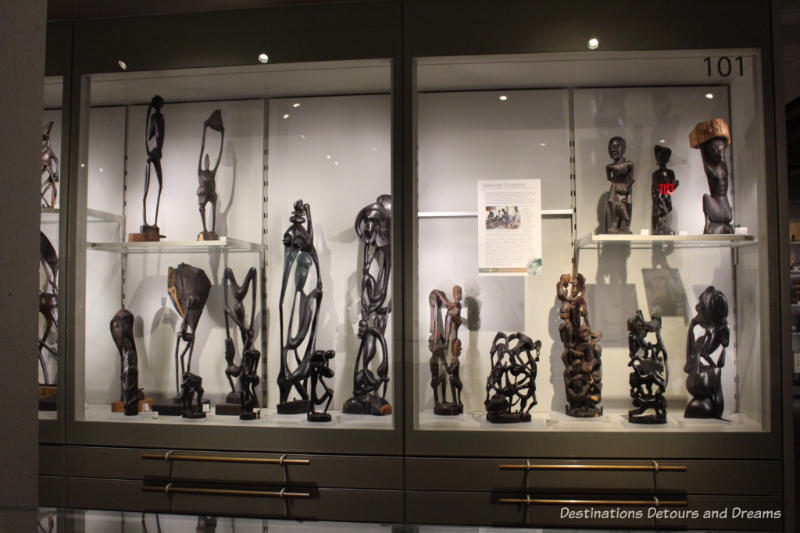
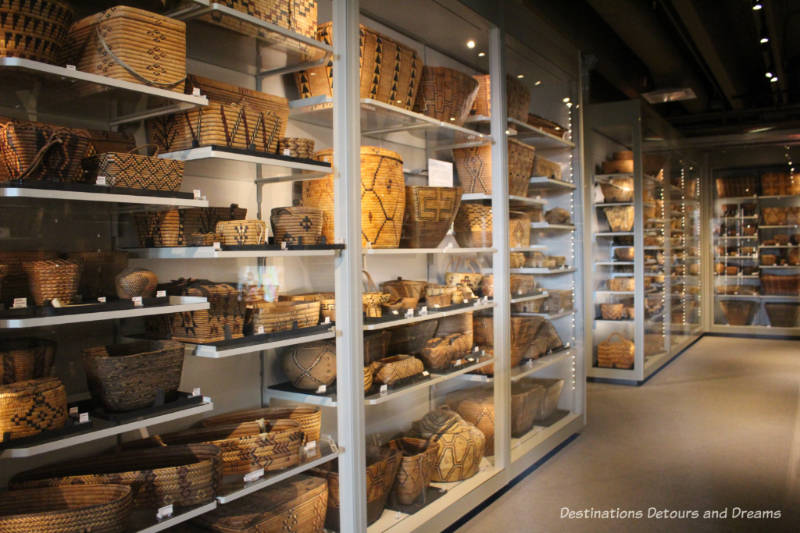
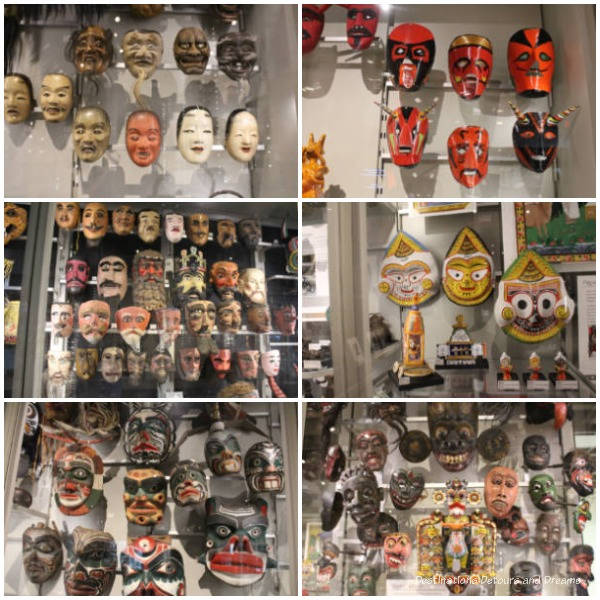
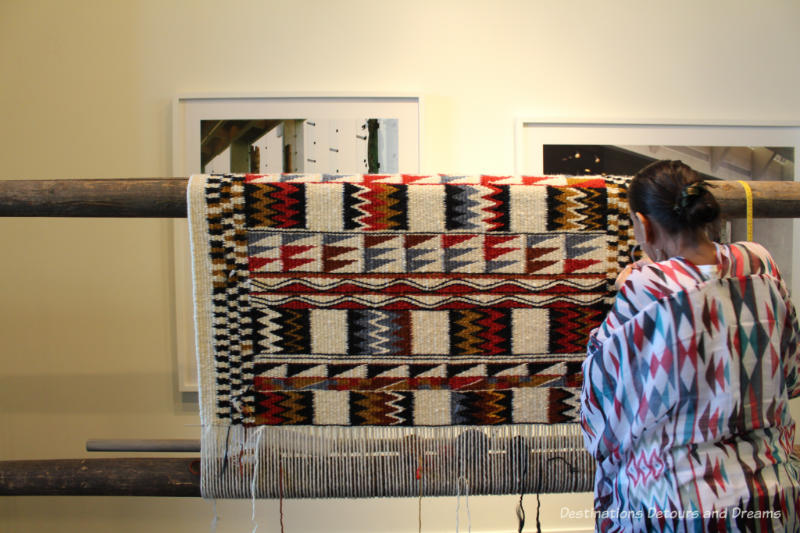
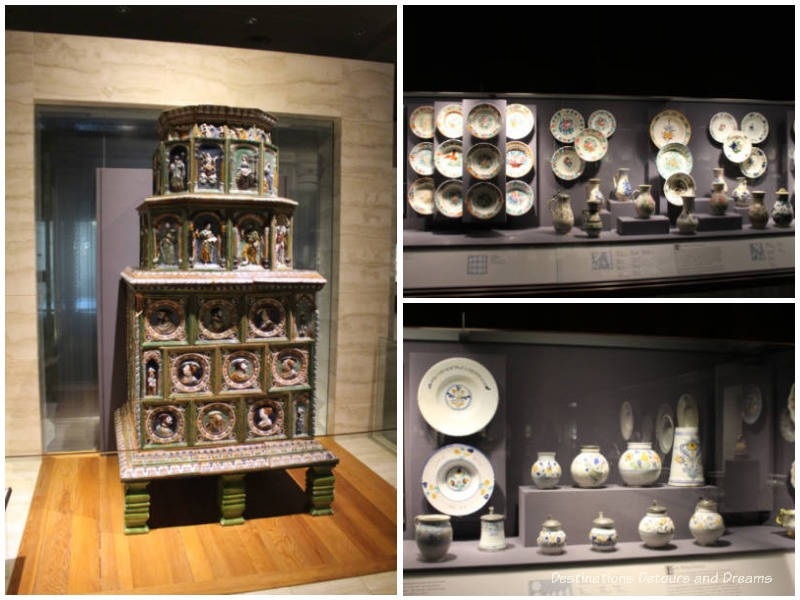
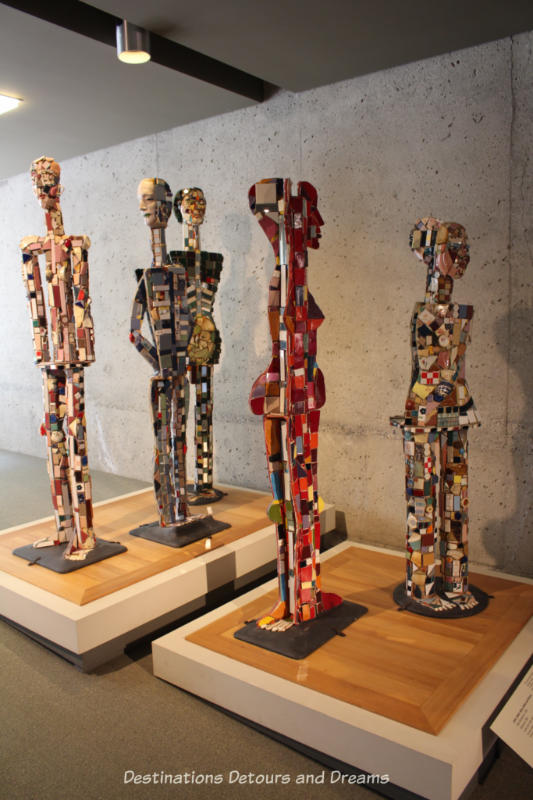
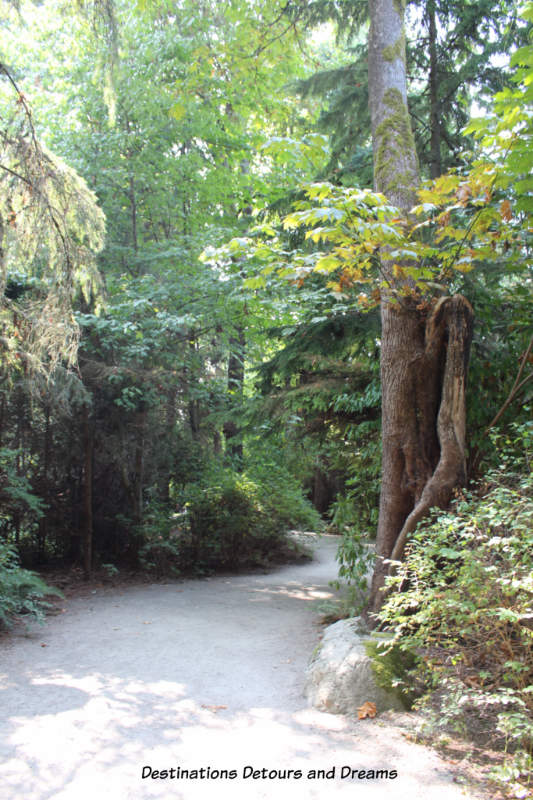
The University of British Columbia grounds, surrounded by forest and situated along the water, are beautiful and provide a lovely setting for the museum’s outdoor exhibit, which includes two Haida houses and numerous poles created between 1959 and 2000.
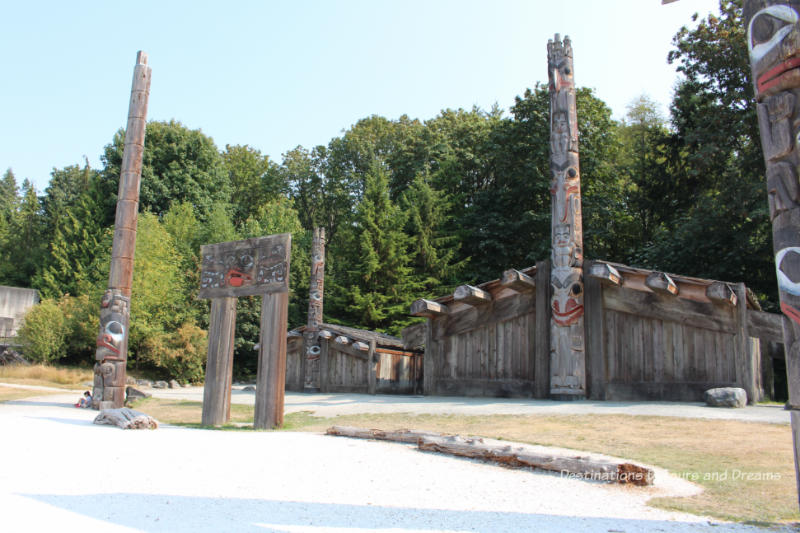
The manner in which the exhibits at the Museum of Anthropology are displayed leads to a joyful sense of discovery. One can easily spend several hours at the Museum of Anthropology. The sheer number of exhibits leaves plenty to discover on subsequent visits. Whether you plan an all-day visit, a series of successive visits, or a one or two-hour visit, the MOA is well worth seeing. The Museum is open daily through the summer and six days a week (closed on Mondays) during the winter.
PIN IT
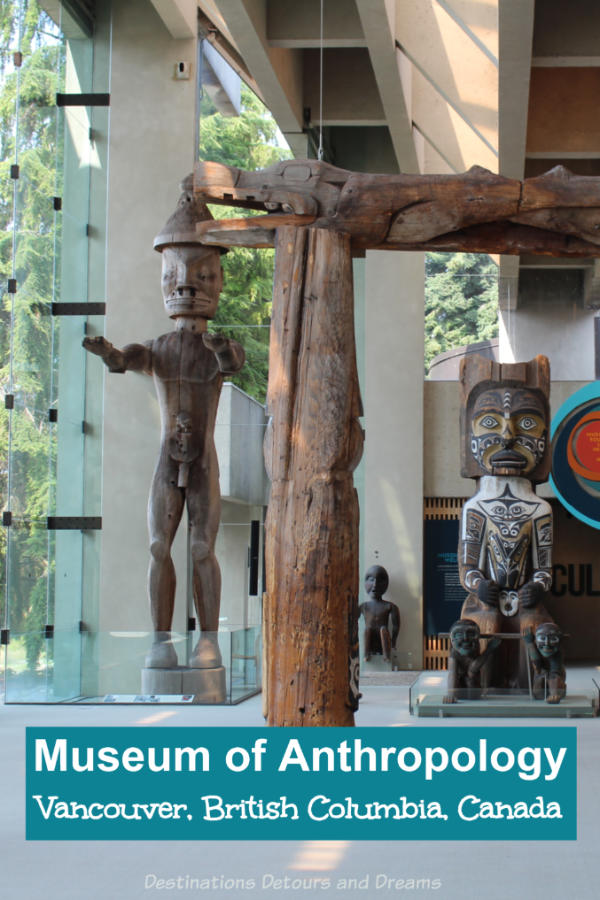
Never miss a story. Sign up for Destinations Detours and Dreams free monthly e-newsletter and receive behind-the-scenes information and sneak peeks ahead.

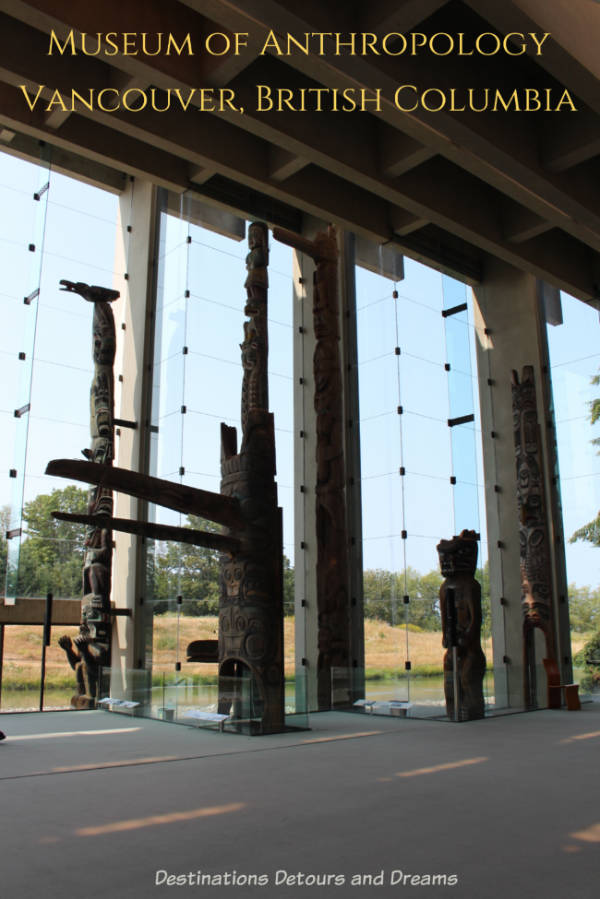
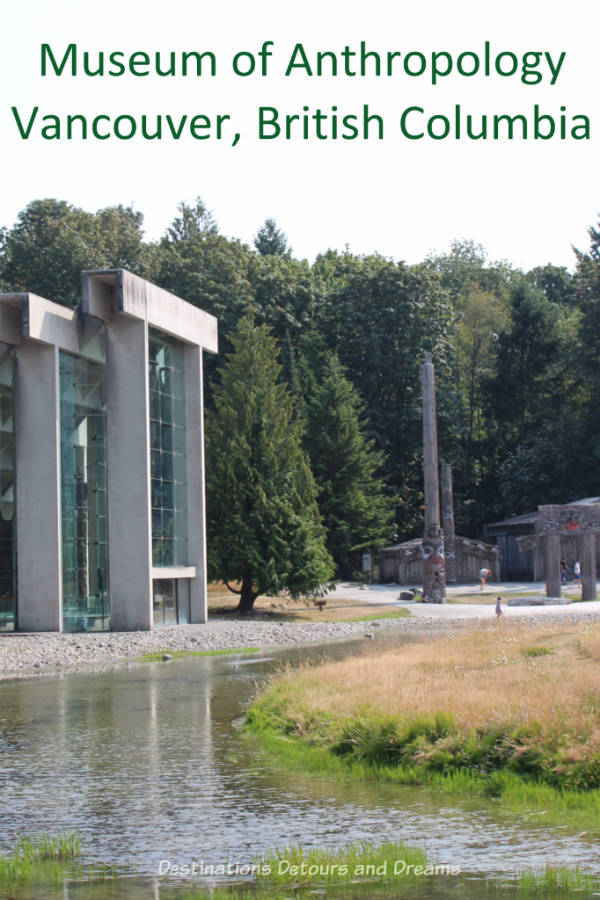
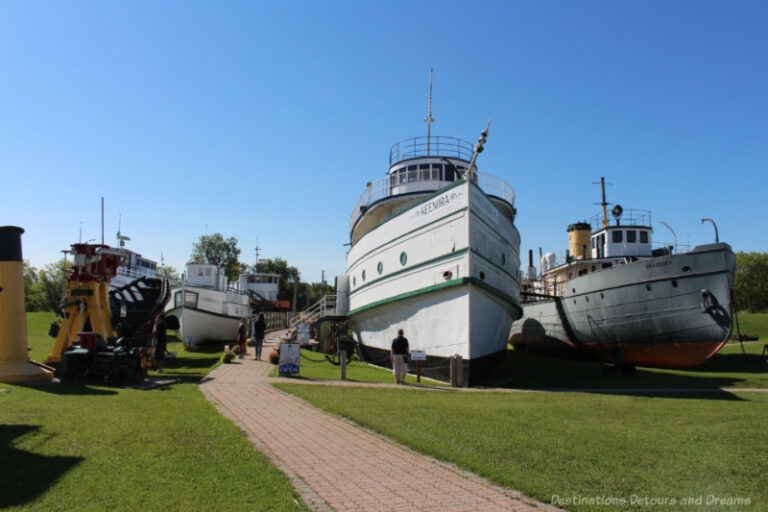
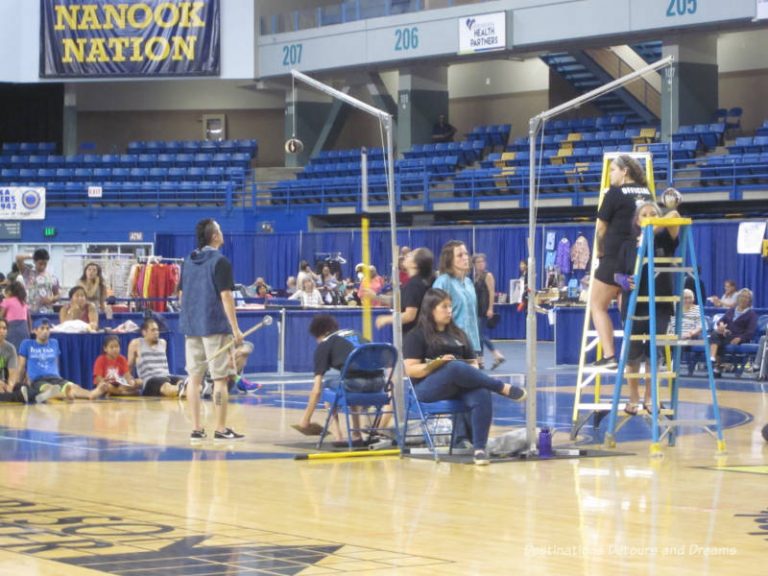
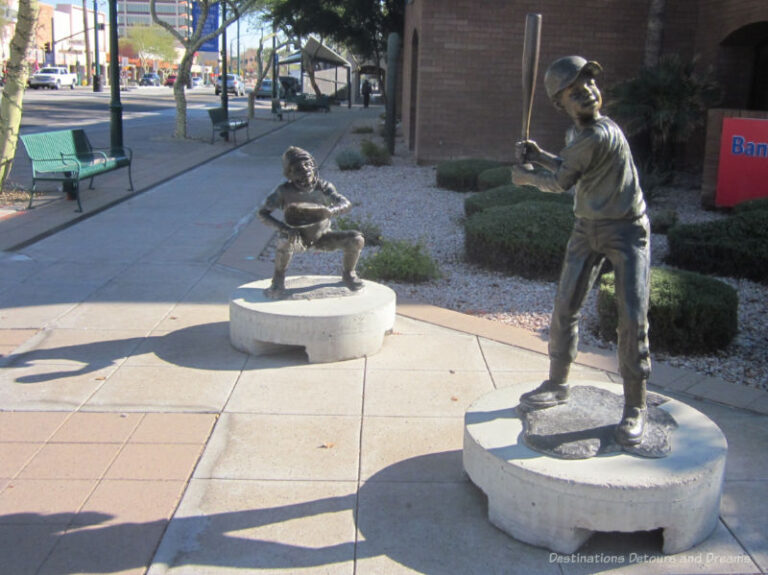
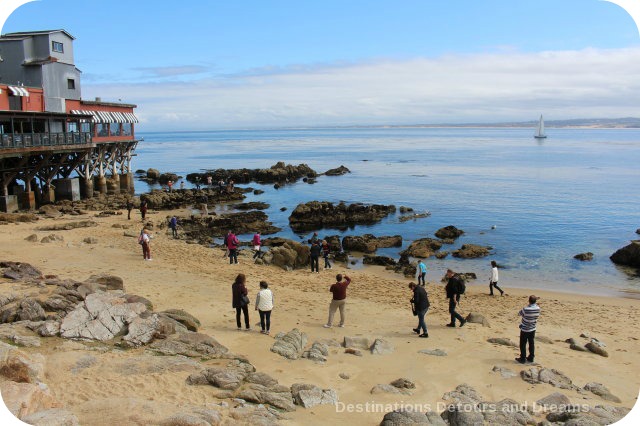
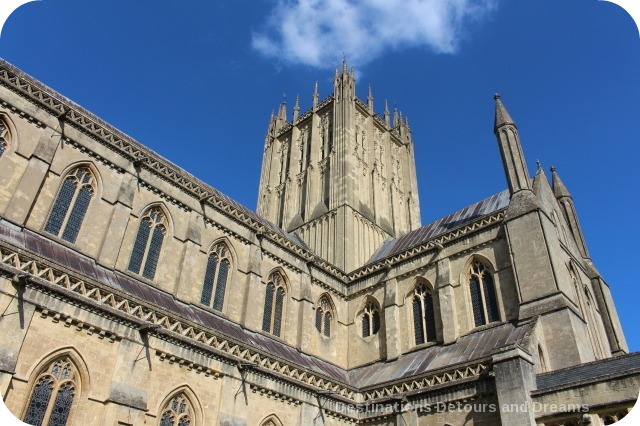
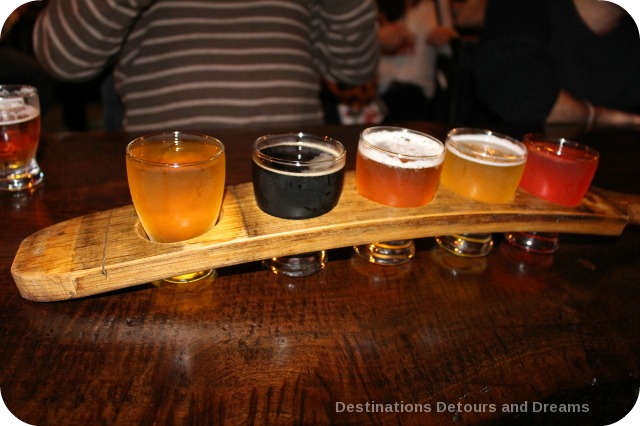
Looks like a vast collection. I always enjoy seeing the Haida art and artifacts in B.C. Distinctive from the Cree and Ojibwe designs we are more familiar with here on the prairies.
Deb, The Museum of Anthropology has an amazingly vast collection. I too love seeing the Haida art and artifacts.
The building itself is pretty impressive. Gives the impression of being open and spacious. Seems they really took advantage of their setting.
Ken, the Great Hall is incredibly impressive and certainly takes advantage of the setting. Gives you the wow factor right away. The entire museum feels open and spacious.
I had no idea that this impressive building and displays existed. A must-see in the future. Thank you Donna, for sharing.
Linda, the Museum of Anthropology will show up when you search for top things to do or see in Vancouver, but its location on the University of British Columbia campus means it is a little away from other tourist attractions. (Although the UBC grounds are beautiful with gardens worth visiting and Pacific Spirit Regional Park with all kinds of hiking and walking trail is right next door.)
Thxfor this post, Donna. I have not been to the Museum of Anthropology in Vancouver. It looks great & does remind me of the Museum of Civilization in Gatineau (which I believe has been renamed.)
Doreen, I think the museum in Gatineau is now called Canadian Museum of History. I’ve not been to it, but have heard great things about it.
Fascinating! This reminds me a lot of the Museum of Northern British Columbia in Prince Rupert, BC, in design and its collection. I really enjoyed it!
Linda, thanks for the information about the museum in Rupert. I’ve not been to that part of British Columbia yet and will want to visit that museum when I do get there.
We will be in Vancouver for a week next year in July! We will have time to visit this interesting museum! Thanks.
Hi Carol. I hope you enjoy the museum. Have you been to Vancouver before? If not, I’d be happy to give you other suggestions for your visit.
This looks to be an exceptional museum. Similar in quality to the one in Mexico City, which I have visited several times. I plan to get to this Anthropology museum next time I’m in Vancouver.
Carole, I think exceptional is an apt description. I hope you enjoy visiting it when you get a chance.
I saw some outdoor totem poles when I was in Vancouver and found them fascinating. If I get back there I’ll definitiely go to the Museum of Anthropology.
Karen, totem poles are not part of the history or indigenous culture on the prairies where I live and I too love to see them when I go to the West Coast. If you are ever back there and should also get to Vancouver Island, the Royal British Columbia Museum in Victoria also has a good collection.
I could see myself wandering around here for a morning or maybe even a day. I’ve always loved the West coast totem poles. I never seem to do a lot of sightseeing when I’m in Vancouver. I stay with friends who have lived in the city for many years. Next time I’ll have to make a point of going on my own.
Nancie, it would be easy to spend a whole day at this museum, but a half day would also be a very satisfying visit. When travelling to visit friends or family, the visiting takes precedence over sightseeing (and rightfully so). If you do get some time to sightsee on your next visit, maybe your friends would want to go too. Often, people don’t get to and forget about the attractions in their own cities.
Oooh! You’ve reminded me how long it has been since we’ve visited the museum! They have such a wonderful collection and you’ve reminded me that there is more than the First Nations exhibits where we usually spend all our time! Time to get back to Vancouver!
Cindy, there is certainly a lot of great things to discover at this museum. It makes return visits as exciting as the first.